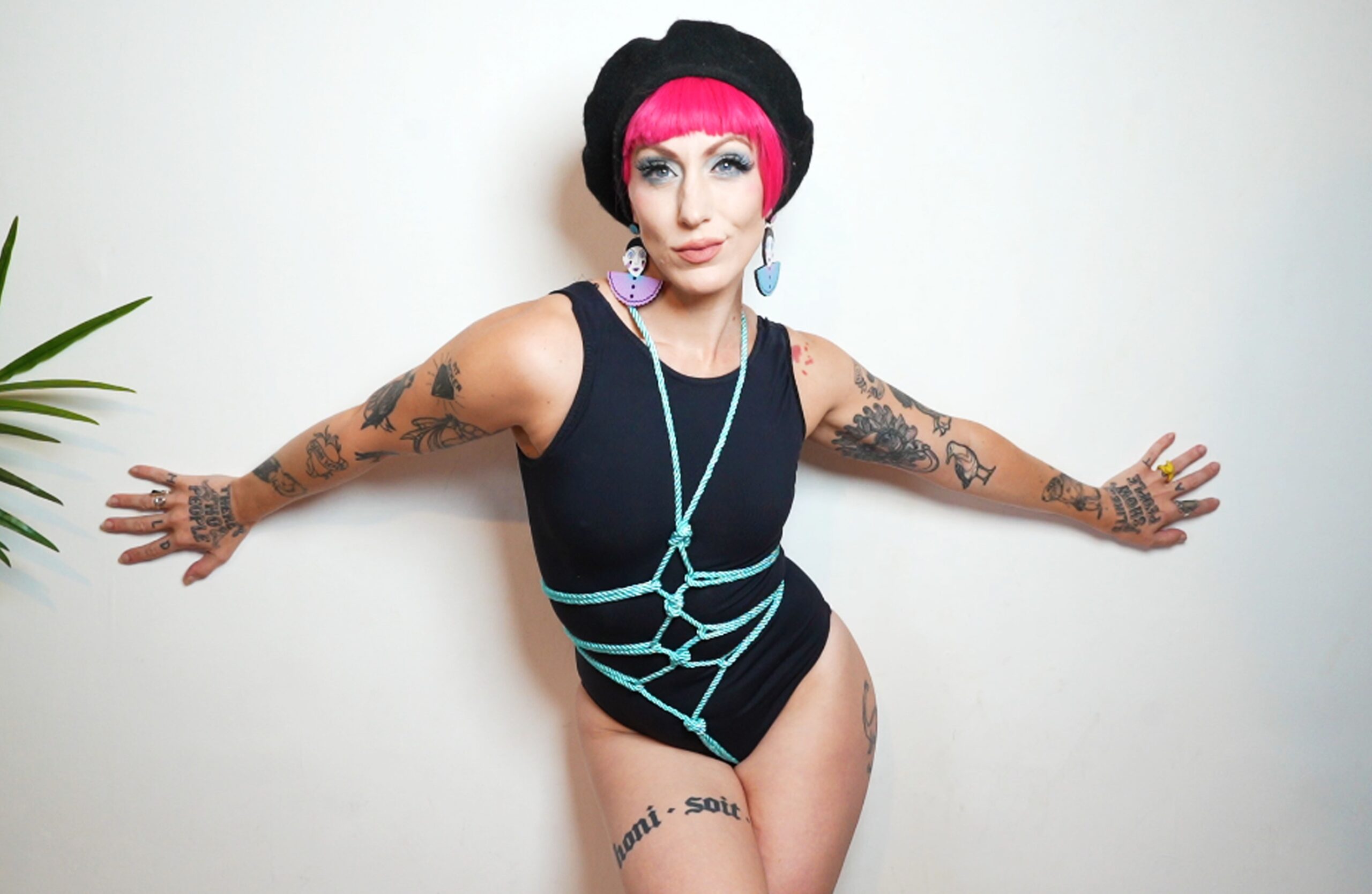What Does It Mean To Be Polyamorous In A Monogamous Society?

Challenges of Polyamory in a Monogamous World
Navigating the complexities of polyamory within a society that predominantly embraces monogamy can present unique challenges.
Societal Norms and Stigma
Societal norms and expectations heavily favor monogamy, often leading to misunderstandings, judgments, and stigma surrounding polyamorous relationships.
Individuals engaging in polyamory may face disapproval from family, friends, or colleagues who struggle to comprehend or accept this alternative relationship model. This societal pressure can create emotional stress and isolation for polyamorous individuals.
Legal and social structures are predominantly designed around monogamous relationships, making it more difficult for polyamorous individuals to navigate legal rights, inheritance, healthcare decisions, and other practical matters.
Furthermore, the stigma associated with polyamory can contribute to feelings of shame, secrecy, and fear of disclosure. This can make it challenging for polyamorous people to build open and honest relationships with others, leading to further isolation and loneliness.
Legal and Practical Barriers

One major challenge faced by polyamorous individuals is the lack of legal recognition for their relationships.
Many legal systems are built on the premise of monogamy, meaning that polyamorous couples often find themselves excluded from various rights and protections.
For example, inheritance laws may not recognize multiple partners equally, leading to potential disputes and complications. Healthcare decisions can also be complicated, as legal frameworks might not clearly define decision-making authority in polyamorous relationships.
Additionally, issues like property ownership and custody arrangements can become complex when navigating a non-monogamous relationship structure.
These legal barriers can create significant stress and uncertainty for polyamorous individuals, making it harder to build stable and secure lives.
Communication and Trust Issues
Communication and trust are foundational to any successful relationship, but they take on heightened significance in polyamorous relationships where multiple partners are involved.
Clear, honest, and open communication is essential for managing expectations, addressing concerns, and ensuring that everyone’s needs are met. Polyamorous individuals need to be comfortable discussing their feelings, desires, boundaries, and any potential conflicts openly and respectfully.
Building trust within a polyamorous relationship requires vulnerability and a willingness to be transparent.
Partners need to feel secure knowing that they can confide in each other without fear of judgment or betrayal. Establishing clear agreements and boundaries helps create a framework of trust, outlining expectations regarding time commitments, emotional intimacy, and physical relationships.
Jealousy and insecurity are common emotions that can arise in polyamorous relationships, particularly when navigating societal norms that often equate love and commitment with monogamy.
It is crucial for polyamorous individuals to work through these feelings in a healthy and constructive manner. Open communication, empathy, and willingness to address underlying insecurities are essential for building resilience within the relationship.
Understanding Polyamorous Relationships
Polyamory, the practice of having multiple loving relationships with the knowledge and consent of all partners involved, often encounters challenges in a society predominantly built on monogamous foundations.
Defining Polyamory
Polyamory, unlike monogamy, involves forming intimate bonds with multiple partners simultaneously, with the full awareness and consent of everyone involved. It’s about building ethical and loving relationships that prioritize honesty, communication, and respect for individual needs and desires.
Within a society that largely embraces monogamy as the norm, polyamorous individuals may face various hurdles. Societal expectations and ingrained beliefs often lead to misunderstandings, prejudice, and even stigmatization of alternative relationship models like polyamory. This can result in emotional stress, social isolation, and difficulties navigating legal and practical matters.
One major challenge stems from the legal framework that predominantly supports monogamous relationships. Many laws, regulations, and societal structures are designed around the concept of one primary partner, leaving polyamorous individuals excluded from certain rights and protections.
This can create complexities in areas like inheritance, healthcare decision-making, and property ownership, adding layers of stress and uncertainty to their lives.
Types of Polyamorous Relationships
Polyamory encompasses various relationship models that involve loving connections with multiple partners, with the knowledge and consent of everyone involved.
Hierarchical polyamory features a primary partner or partners while allowing for additional relationships of varying levels of importance and intimacy.
Non-hierarchical polyamory, also known as “polycule” structure, emphasizes equality among all partners, without distinctions in priority or exclusivity.
Open relationships involve committed couples who agree to have sexual or emotional connections outside their primary relationship, often with clear boundaries and communication.
Solo polyamory involves individuals who are single but engage in multiple romantic relationships, prioritizing autonomy and independence within their connections.
Core Principles of Polyamory
Polyamorous relationships are characterized by the ethical and consensual pursuit of intimate connections with multiple partners. At its core, polyamory emphasizes honesty, transparency, and open communication among all involved parties.
A fundamental principle of polyamory is respect for individual autonomy and agency. Each partner has the freedom to define their own boundaries, needs, and desires within the relationship structure. Polyamorous individuals recognize that love and intimacy can exist in diverse forms and are not limited to a single partner.
strap-on play gear UK Consent and clear communication are paramount in polyamorous relationships. All partners must freely and enthusiastically agree to engage in the relationship and openly discuss their expectations, boundaries, and potential challenges. Regular check-ins and honest conversations help ensure that everyone’s needs are met and that the relationship dynamic remains healthy and fulfilling.
Navigating Societal Expectations
Navigating societal expectations can be a challenge for anyone who lives outside of conventional norms, but for those practicing polyamory, it presents unique hurdles.
Disclosure and Honesty
The pressure to conform to societal norms around relationships can be intense. Polyamorous individuals often face misunderstanding, judgment, and even prejudice from those who don’t understand their relationship model. UK adult fashion This can lead to feelings of isolation, shame, and difficulty finding support.
Open and honest disclosure is essential for navigating these challenges. By sharing their experiences with trusted friends, family, or support groups, polyamorous individuals can help break down stigma and foster understanding.
It’s important to remember that there is no one “right” way to practice polyamory. Different relationships will have unique structures and dynamics based on the needs and desires of those involved. What matters most is that all partners are consenting, respectful, and committed to open communication.
Building a supportive network can be invaluable for navigating the complexities of polyamorous life. Connecting with other polyamorous individuals through online communities or in-person groups can provide a sense of belonging and offer valuable advice and support.
Managing Different Relationship Dynamics
Navigating societal expectations can be challenging for anyone who lives outside conventional norms, but it presents unique hurdles for those practicing polyamory. The pressure to conform to societal norms around relationships can be intense. Polyamorous individuals often face misunderstanding, judgment, and even prejudice from those who don’t understand their relationship model. This can lead to feelings of isolation, shame, and difficulty finding support.
Open and honest disclosure is essential for navigating these challenges. By sharing their experiences with trusted friends, family, or support groups, polyamorous individuals can help break down stigma and foster understanding. It’s important to remember that there is no one “right” way to practice polyamory. Different relationships will have unique structures and dynamics based on the needs and desires of those involved. What matters most is that all partners are consenting, respectful, and committed to open communication. Building a supportive network can be invaluable for navigating the complexities of polyamorous life. Connecting with other polyamorous individuals through online communities or in-person groups can provide a sense of belonging and offer valuable advice and support.
Dealing with Judgment and Misunderstandings
Navigating societal expectations is a challenge for anyone who lives outside conventional norms, but it presents unique hurdles for those practicing polyamory. The pressure to conform to societal norms around relationships can be intense. Polyamorous individuals often face misunderstanding, judgment, and even prejudice from those who don’t understand their relationship model. This can lead to feelings of isolation, shame, and difficulty finding support.
Open and honest disclosure is essential for navigating these challenges. By sharing their experiences with trusted friends, family, or support groups, polyamorous individuals can help break down stigma and foster understanding. It’s important to remember that there is no one “right” way to practice polyamory. Different relationships will have unique structures and dynamics based on the needs and desires of those involved. What matters most is that all partners are consenting, respectful, and committed to open communication.
Leg Avenue lingerie Building a supportive network can be invaluable for navigating the complexities of polyamorous life. Connecting with other polyamorous individuals through online communities or in-person groups can provide a sense of belonging and offer valuable advice and support.
Finding Support and Community
Finding support and community is crucial for anyone who lives outside societal norms, but it’s especially important for those practicing polyamory.
Online Resources and Groups
Numerous online resources and groups cater specifically to the needs of polyamorous individuals.
These platforms provide a safe space to connect with others who understand the unique challenges and joys of polyamory.
Online forums, social media groups, and dedicated websites offer opportunities for sharing experiences, asking questions, seeking advice, and building meaningful connections with like-minded individuals.
These online communities can be invaluable for navigating societal pressures, finding support during difficult times, and learning from the experiences of others who are navigating similar paths.
Therapy and Counseling for Polyamorous Individuals

Finding a therapist or counselor experienced in working with polyamorous individuals can be incredibly beneficial.
Traditional therapy models often operate under the assumption of monogamy, which may not resonate with the unique needs and experiences of polyamorous individuals.
A therapist who understands polyamory can provide a safe space to explore relationship dynamics, address challenges related to communication, boundaries, and jealousy, and support personal growth within the context of non-monogamous relationships.
When seeking therapy, it’s important to inquire about a therapist’s experience and comfort level working with polyamorous clients.
Building a Supportive Network of Friends and Family
Navigating societal expectations can be challenging for anyone who lives outside conventional norms, but it presents unique hurdles for those practicing polyamory. The pressure to conform to societal norms around relationships can be intense. everyday lube Polyamorous individuals often face misunderstanding, judgment, and even prejudice from those who don’t understand their relationship model. This can lead to feelings of isolation, shame, and difficulty finding support.
Open and honest disclosure is essential for navigating these challenges. By sharing their experiences with trusted friends, family, or support groups, polyamorous individuals can help break down stigma and foster understanding. seductive babydolls
It’s important to remember that there is no one “right” way to practice polyamory. Different relationships will have unique structures and dynamics based on the needs and desires of those involved. What matters most is that all partners are consenting, respectful, and committed to open communication.
Building a supportive network can be invaluable for navigating the complexities of polyamorous life. Connecting with other polyamorous individuals through online communities or in-person groups can provide a sense of belonging and offer valuable advice and support.
- Connecting with other polyamorous individuals through online communities or in-person groups can provide a sense of belonging and offer valuable advice and support.
- Online forums, social media groups, and dedicated websites offer opportunities for sharing experiences, asking questions, seeking advice, and building meaningful connections with like-minded individuals.
- These online communities can be invaluable for navigating societal pressures, finding support during difficult times, and learning from the experiences of others who are navigating similar paths.
Finding a therapist or counselor experienced in working with polyamorous individuals can be incredibly beneficial.
Traditional therapy models often operate under the assumption of monogamy, which may not resonate with the unique needs and experiences of polyamorous individuals.

A therapist who understands polyamory can provide a safe space to explore relationship dynamics, address challenges related to communication, boundaries, and jealousy, and support personal growth within the context of non-monogamous relationships.
When seeking therapy, it’s important to inquire about a therapist’s experience and comfort level working with polyamorous clients.



























